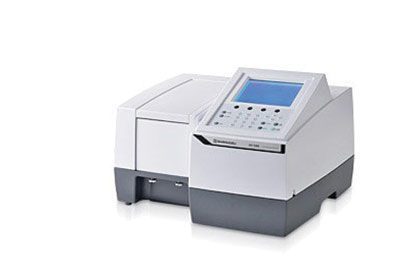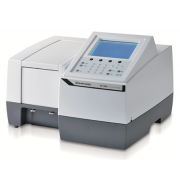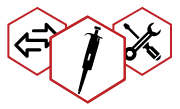UV-1280

The monitored single-beam UV-1280 is equipped with seven measurement modes, features USB data portability, and offers wavelength scanning from 190 to 1,100 nm. Combining these features with intuitive operation improves work efficiency, making the compact UV-1280 the ideal choice for applications in a variety of industries.

|
|
|
A Variety of High-Level Measurement Modes
Equipped with a range of programs, the UV-1280 can be used for everything from photometric, spectral, and kinetics measurements to DNA/protein and high-level multi-component quantitation.
| Photometric Mode | Measures the absorbance or transmittance at a single wavelength or multiple (up to eight) wavelengths. The instrument is also capable of simple quantitation using the K-factor method. For a multiple-wavelength measurement, calculations can be performed on the data obtained for up to four wavelengths, including the calculation of the difference between, or ratio of, the measurements obtained for two wavelengths. |
| Spectrum Mode | A sample spectrum is recorded using wavelength scanning. Repeat scans let you follow sample changes over time. Zoom in on the finished spectrum for a better view; subsequently, use the peak/valley pick function to select maxima and minima and perform a wide variety of data processing functions. |
| Quantitation Mode | Generates a calibration curve from the measurement of standards, and then calculates the concentrations of unknowns. Allows various combinations of wavelength number (1 to 3 wavelengths and derivatives) and calibration curves (K-factor and first-to-third order). |
| Kinetics Mode | Measures absorbance changes as a function of time, and obtains the enzymatic activity values. The kinetics measurement method automatically calculates the amount of change per minute, and then calculates an activity value from a specified coefficient. The rate measurement method, which determines whether the absorbance is changing linearly, can also be selected. In addition, add the CPS-100 thermoelectrically temperature-controlled cell positioner for measurement of multiple samples in succession. |
| Time Scan Mode | Measures the change in absorbance, transmittance or energy as a function of time. Add the CPS-100 thermoelectrically temperature-controlled cell positioner for simultaneous measurement of multiple samples under constant-temperature conditions. |
| Multi-Component Quantitation Mode |
Quantitates up to eight components mixed in a single sample. The calibration equation is determined using pure or mixed components with known values. |
| Biomethod Mode | Determine DNA and protein concentrations with the following quantitation methods using the bioscience/life science program included as standard.DNA/Protein Quantitation
Protein Quantitation
|
 Easy to Operate
Easy to Operate Instrument validation functions have been enhanced.
Instrument validation functions have been enhanced. Data Storage on USB Flash Drives
Data Storage on USB Flash Drives
